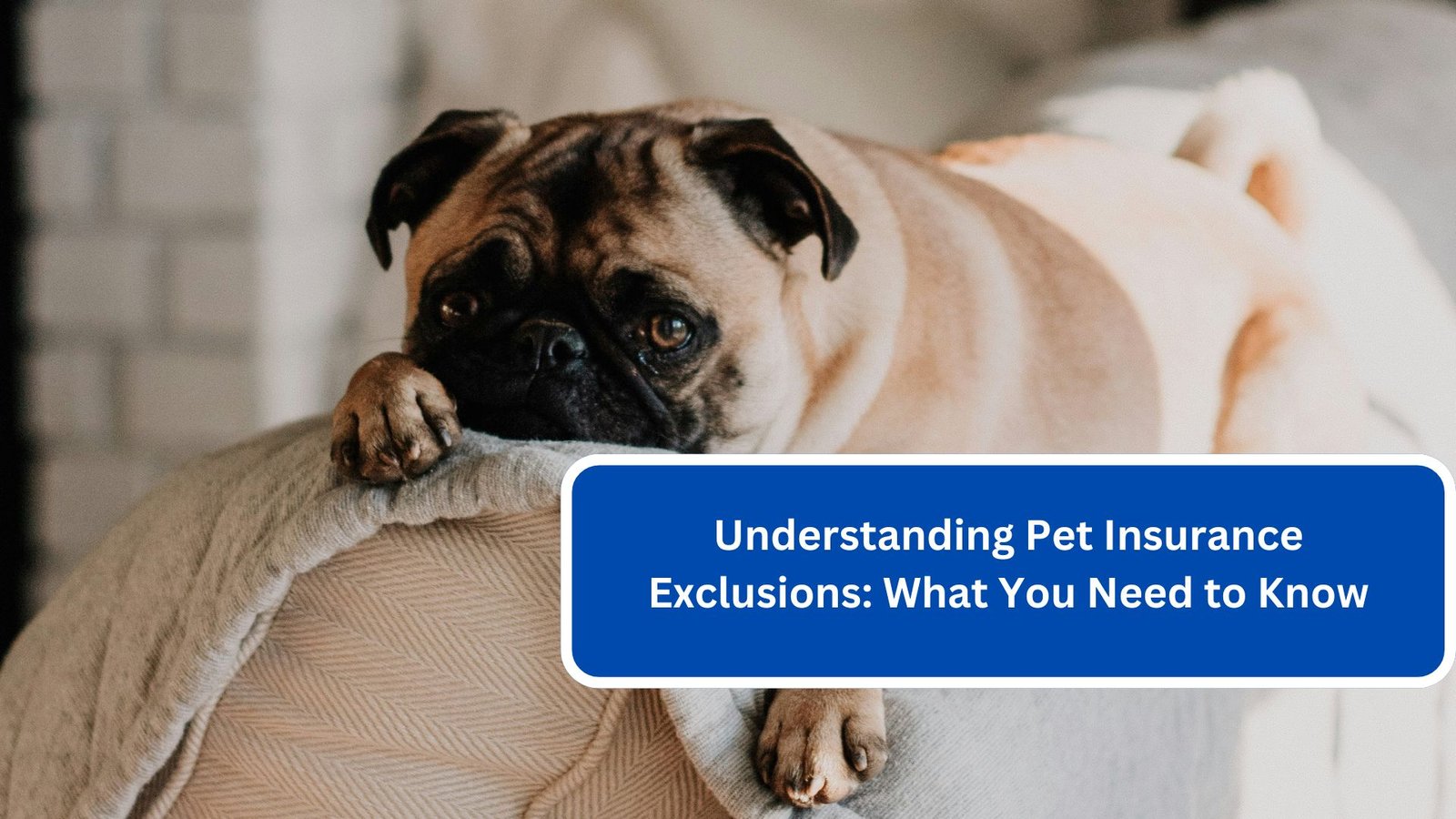Pet insurance is an essential tool for managing the costs of veterinary care, but it’s crucial to understand the exclusions that may apply to your policy. Knowing what is and isn’t covered can help you make informed decisions about your pet’s healthcare and financial planning. This guide breaks down common exclusions in pet insurance policies and what you need to be aware of.
What Are Pet Insurance Exclusions?
Exclusions refer to specific situations, conditions, or treatments that are not covered by your pet insurance policy. These exclusions can vary significantly between insurers, so it’s important to read the fine print of any policy you consider.
Common Exclusions in Pet Insurance
1. Pre-Existing Conditions
Most pet insurance companies do not cover pre-existing conditions—health issues that your pet had before you purchased the policy. This can include anything from chronic illnesses to injuries.
- Tip: Some insurers may offer limited coverage for conditions that have been resolved for a certain period (e.g., 12 months), so it’s worth asking.
2. Routine and Preventative Care
Basic wellness care, including vaccinations, routine check-ups, dental cleanings, and spaying/neutering, is often not included in standard policies.
- Tip: Consider purchasing a separate wellness plan or add-on coverage if you want routine care included.
3. Cosmetic Procedures
Procedures that are considered cosmetic or non-essential—such as ear cropping or tail docking—are typically excluded from coverage.
4. Behavioral Issues
Treatment for behavioral problems, including anxiety and aggression, is often not covered under standard policies.
- Tip: If your pet has behavioral issues, look for specific policies that may offer coverage for behavioral therapy.
5. Certain Breeds and Genetic Conditions
Some insurers may have exclusions for hereditary or genetic conditions that are common in specific breeds. For example, hip dysplasia is more prevalent in large dog breeds.
- Tip: When considering a breed, check the policy for any breed-specific exclusions.
6. Alternative Treatments
Coverage for alternative treatments, such as acupuncture or chiropractic care, may not be included in standard policies.
- Tip: If you’re interested in alternative therapies, inquire about coverage options when selecting a policy.
7. Non-Essential Procedures
Elective surgeries or treatments that are not deemed medically necessary may be excluded. This can include certain types of imaging or procedures that are not critical to your pet’s health.
How to Navigate Exclusions
Read the Fine Print
Always read the policy details thoroughly. Look for a section specifically outlining exclusions and limitations. Understanding these details can prevent surprises when you file a claim.
Ask Questions
If you have any doubts about what is covered, don’t hesitate to ask the insurer for clarification. Understanding the specifics of your policy will help you make informed decisions regarding your pet’s care.
Consider Supplemental Coverage
If your pet has specific needs or you want broader coverage, consider policies that offer supplemental plans or riders. These can add coverage for routine care or alternative treatments that may otherwise be excluded.
Regularly Review Your Policy
As your pet ages or if their health status changes, review your policy to ensure it still meets your needs. Some insurers may update their offerings, and you may find new options that provide better coverage.
Conclusion
Understanding the exclusions in your pet insurance policy is crucial for effective financial planning and ensuring your pet receives the care they need. By familiarizing yourself with common exclusions and asking the right questions, you can select a policy that best fits your pet’s health requirements and your budget. Remember, being informed is key to navigating the complexities of pet insurance and securing the best care for your furry friend.

